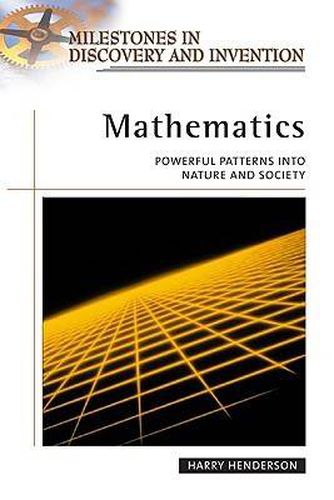Readings Newsletter
Become a Readings Member to make your shopping experience even easier.
Sign in or sign up for free!
You’re not far away from qualifying for FREE standard shipping within Australia
You’ve qualified for FREE standard shipping within Australia
The cart is loading…






For most people, mathematics is an abstraction with little connection to the
real
universe. But some mathematicians have discovered relatively simple yet exceedingly powerful patterns that yield insight into aspects of natural and human behavior.
Mathematics
presents 10 essays that profile the minds behind such patterns, many of which have surfaced in recent popular culture. Meet Leonardo of Pisa, who worked with Fibonacci numbers and the
Golden Section ; John von Neumann and John Nash, proponents of game theory; Edward Lorentz, who developed chaos theory; and Sid Meier, who has created award-winning computer games, such as Gettysburg and SimGolf, and five other mathematicians. Although the ideas explored here may produce complex results, they are inherently simple in concept, making them appealing, accessible vehicles for acquainting students with the human side of mathematics.
$9.00 standard shipping within Australia
FREE standard shipping within Australia for orders over $100.00
Express & International shipping calculated at checkout
For most people, mathematics is an abstraction with little connection to the
real
universe. But some mathematicians have discovered relatively simple yet exceedingly powerful patterns that yield insight into aspects of natural and human behavior.
Mathematics
presents 10 essays that profile the minds behind such patterns, many of which have surfaced in recent popular culture. Meet Leonardo of Pisa, who worked with Fibonacci numbers and the
Golden Section ; John von Neumann and John Nash, proponents of game theory; Edward Lorentz, who developed chaos theory; and Sid Meier, who has created award-winning computer games, such as Gettysburg and SimGolf, and five other mathematicians. Although the ideas explored here may produce complex results, they are inherently simple in concept, making them appealing, accessible vehicles for acquainting students with the human side of mathematics.